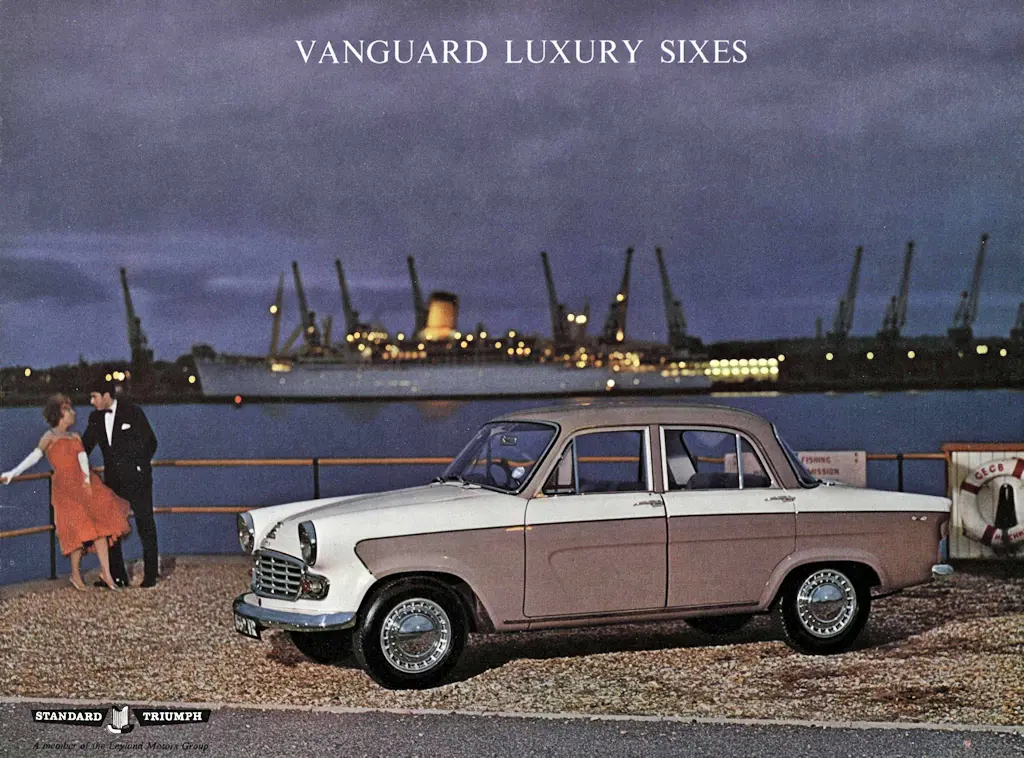Why I Like The Standard Vanguard Luxury Six
18 May 2023
Some cars have the misfortune of being overlooked due to motorists’ perception of their being “old fashioned”. A case in point is the Vanguard Luxury Six, yet it represents the bridge between the first major post-war Standards and the Triumph 2000.
In July 1947 The Motor hailed the original Vanguard Phase 1 as “a credit to Sir John Black and his engineers, and a worthy example of British automobile engineering and production genius”. Full production did not commence until May 1948, with power from Standard’s latest 2,088cc engine. However, there was little point in calling the firm’s London office on MAYfair 5011 for more details as domestic motorists faced a waiting list of more than two years.

By the time of the Phase II facelift in 1953 the name Vanguard embodied reliable motoring, with newsreel footage of military bases reflecting its popularity with the armed forces. But the Ford Zephyr Mk. I and the Vauxhall Velox E-Series, which debuted in 1950 and 1951 respectively, tempted customers with their six-cylinder engines. When Standard launched the extensively revised Phase 3 in 1955, its ‘Big Four’ unit already seemed passé. Three years later facelifted Vanguard Vignale, with bodywork modifications by Giovanni Michelotti was a partial solution but the 2,088cc plant remained.
In fact, Standard was already at work on an intended replacement. Project Zebu was to revert to a separate chassis, but would have a new six-cylinder engine, to be made on the same tooling as the forthcoming Triumph Herald unit and all-independent suspension. Meanwhile, the styling included pillarless doors and a Mercury-style reverse-rake rear window, although motoring journalists are believed to have warned Standard that the forthcoming Ford Anglia 105E would pre-empt this feature.
But Canley’s management eventually cancelled Zebu and their financial straits led them to even consider building the AMC Rambler as a Vanguard replacement. As a stopgap, the Luxury Six, which debuted at the 1960 London Motor Show, was their first six-cylinder car in over twenty years. For £1,021 2s 6d for the saloon, or £1,134 9s 2d for the estate, you too could enjoy a twin-carburetor 1,998cc engine, “the handling of a light car" and a "distinguished fascia". Autocar praised the engine's smoothness, but by 1962 it seemed redolent of another era compared with the latest Zodiac Mk. III and Cresta PB.

Canley produced a mere 9,953 examples of the Luxury Six before the Triumph 2000, with the same power plant, replaced it in October 1963. As I wrote for The Telegraph, “By then, the Standard brand was no more, its name redolent of austerity and National Service rather than a brave new world of square-bottom ties and Luncheon Vouchers”.
Yet there is something immensely appealing about a well-preserved Vanguard Luxury Six, especially when finished in jaunty duotone shades. It is a sold, unpretentious, and rather handsome motor car, with a purposefulness not a million miles from a Volvo Amazon. In addition, one guest-starred in The Cheaters, an exceedingly low-rent television series with an apparent budget of 2/6d. And it has to be said the Vanguard gave one of the best performances -
